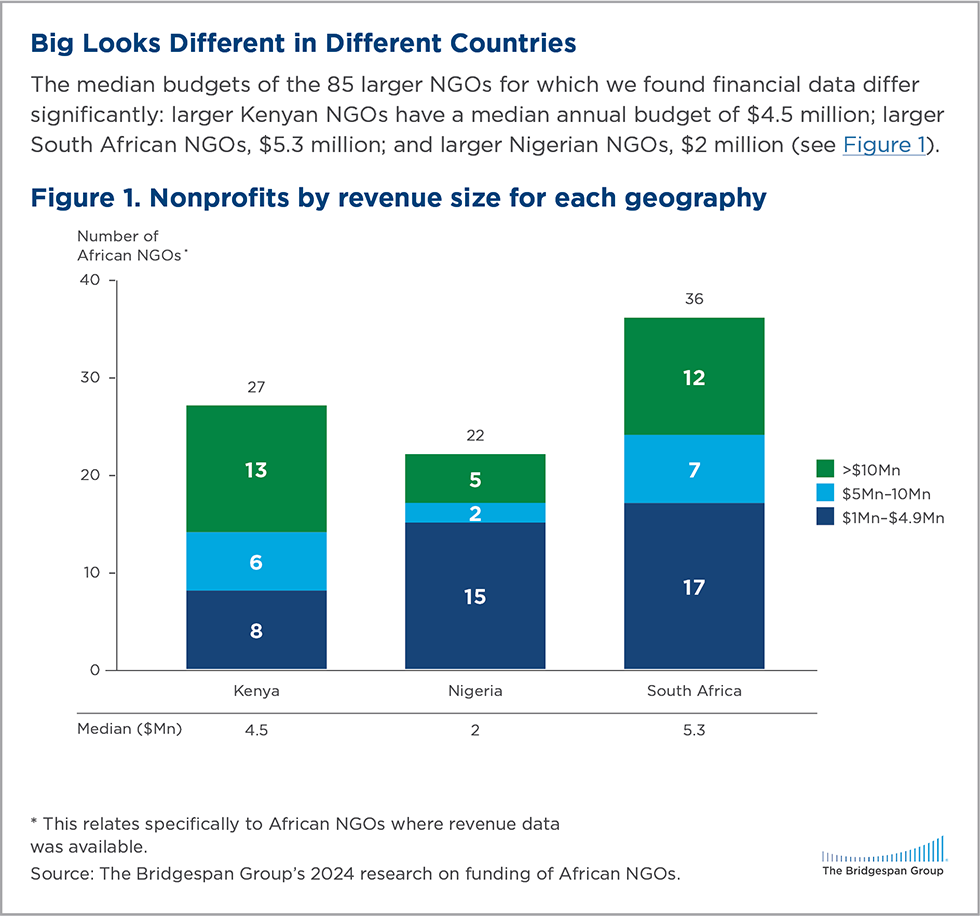Executive Summary
Many African nongovernmental organisations (NGOs) are well run, are deeply rooted in their communities and countries, and deliver powerful impact on the continent. Yet many operate in an environment of funding scarcity and uncertainty.
How have their revenue strategies adapted to reflect those challenges? We set out to learn more about how these NGOs found the funding they needed to grow and sustain themselves. Our team analysed revenue data for 85 NGOs in Kenya, Nigeria, and South Africa with budgets over $1 million and interviewed leaders of 33 large NGOs in those countries.
Download a PDF of the full report
What we found is that although only a small share of international funding for the African social sector goes to African NGOs, those NGOs that have grown significantly rely overwhelmingly on international sources. These sources include both philanthropy from outside Africa (foundations or high-net-worth individuals), and bilateral (foreign government) and multilateral (e.g. World Bank) donors. Amongst the NGOs that we interviewed, over 90 percent rely on philanthropic, bilateral, or multilateral funding from outside Africa for most of their revenue.
To be sure, although this research focuses on how African NGOs grew large, we do not mean to imply that budget size equals impact. At The Bridgespan Group, we have worked with and observed small organisations with modest budgets that drive outsized impact in Africa. But for some NGOs, growing and sustaining a larger budget have been critical to achieving that impact.
This article reports on five key findings from our research:
- International funding fuels the growth of African NGOs.
- NGOs have adopted tactics specific to accessing international funding.
- Domestic funding helps NGOs in South Africa much more than in Kenya and Nigeria.
- Flexible funding is relatively scarce but can be catalytic.
- African NGOs often seek to broaden their revenue mix to sustain their growth.
There remains much to do to break down the historical barriers that hold African NGOs back from reaching their full potential. And for African NGOs – with their distinct role in the African civil society ecosystem and their proximity to the communities they serve – that potential is enormous.







